
马特是真名,历史文化探访者,个人网站www.tiexiuyugudao.com,微信公号:斗量之海。
Tang soil is scraped in the sky, and Tang Dynasty is on the ground, an immersive journey of Zhengding
Written in front: In 2020, my historical and cultural visit and travel project was interrupted for a year due to the epidemic. I concluded a few days ago that I planned and completed 8 routes in the past 3 years, involving more than 50 towns and producing more than 400,000 words of works. , these experiences should be put to better use. I decided to pick up this craft again, the content that I did before was often too remote and the time cost was high. This time, I decided to do some easier daily operations and make a more pragmatic contribution to the society. I have done 3 cities before, Dingzhou tour , Jizhou tour and Baoding tour .
The text begins:
In Zhengding just in time for the dusty weather, an uncle walked by and said, "The sky is all Tangtu", and I was suddenly touched. "Tangtu" seems to be a dialect in central and southern Hebei. I have also heard this in Gansu. statement.
How did "Tang" come from in the Tang Dynasty? In the period of the ancient Yellow Emperor, there was a Yi Qi Fangxun, whose father was the great-grandson of the Yellow Emperor, and his fief was the ancient Tang Kingdom, located in today's Tang County, Baoding, Hebei, and later moved to Taiyuan, Shanxi. In ancient times, the emperor usually used the country name that once existed locally. The Li family, who started from Taiyuan at the end of the Sui Dynasty, used the country name of Tang that once existed locally, called the Tang Dynasty.
Tang County is just to the northeast of Zhengding, and the sand and dust are blowing from there. The saying that the sky is all Tang soil, which refers to both space and time, we came to this small town of Zhengding to find the relics of the Tang Dynasty.
Within the scope of Hebei Province, Zhengding is probably the most respected ancient city of cultural tourism. It is very close to the provincial capital Shijiazhuang and is regarded as the cultural tourism facade of the whole province. Zhengding's very rich cultural tourism resources are also a solid foundation for development. This ancient city contains In addition to the historical relics of the Sui, Tang, Song, Yuan, Ming and Qing dynasties, more than one ancient building was named "rare in existence" and "the only one in the country".
What I am curious about is whether Zhengding can be worthy of its own splendid historical relics in the environment where the development of cultural and tourism ancient cities across the country is generally poor. In the public's impression, Hebei Province does not seem to be known as a tourist attraction, but can Zhengding have transcendence as a cultural tourism facade?
Why go to Zhengding?
1. Cultural and tourism resources are extremely rich: Zhengding, as a county town, has 10 national-level protection units, inscriptions in regular script in Sui Dynasty, bell tower in Tang Dynasty, bronze-cast Bodhisattva in Song Dynasty and Mani Temple, a unique building, as well as being known as the God of Oriental Beauty. The Hanging Mountain Bodhisattva, this small town is considered by Mr. Liang Sicheng as a treasure house of ancient buildings.
2. The appearance of ancient buildings is complete and beautiful, and the appreciation cost is not high: Appreciating the ancient buildings itself requires a certain learning cost, and it is not very friendly to tourists who are not interested or have no time to understand. This is also the embarrassment of cultural tourism resources in some areas. The historical value is very high Tall but not beautiful enough for tourists to see why. However, the ancient buildings in Zhengding are rich in style, complete in restoration, and have a strong visual shock on the exterior. Even tourists who do not know historical buildings can intuitively appreciate the beauty.
3. It is very close to Shijiazhuang: To go to Zhengding, you must first go to Shijiazhuang. Shijiazhuang is an important railway hub, and there are many trains from various places. If it is a 2-day tour, you can visit the Hebei Provincial Museum.
4. The development of cultural and tourism facilities is complete: As the facade of cultural tourism in Hebei Province, Zhengding has a relatively high level of tourism development, and the restoration of ancient buildings is barely passable. The tourism hardware such as public toilets, tourist signs, and scenic shuttles are relatively complete, and Zhengding County is the seat of the city. The business itself is relatively prosperous, and the food and beverage consumption is sufficient, which is suitable for leisure travel.
Necessary expenses: 257 yuan for round-trip high-speed rail from Beijing, 120 yuan for 6 scenic spots, and 12 yuan for city transportation, totaling 389 yuan.
Let's start the day's journey. By the way, the ancient buildings in Zhengding are very complicated, and I can't explain the reasons. I just want to remind you what to focus on this trip. If you really need in-depth cultural tourism, you'd better find someone who knows how to go to explain it together. .
arrive at positivity
First of all, it must be said that compared with the first 3 destinations in my project (Dingzhou, Jizhou, Baoding), Zhengding is indeed a bit troublesome in terms of transportation. Because there is no high-speed train directly to Zhengding in Beijing, the ordinary train with the K prefix takes at least 3 hours, and there are only 3 trips a day. Therefore, from Beijing to Zhengding, it is generally necessary to take the high-speed train to Shijiazhuang, 1 hour and 20 minutes, and then transfer to the city traffic.
I took the high-speed train that departed from Beijing West Railway Station at 7:43, arrived at Shijiazhuang Station at 9:02, and arrived at Zhengding County at 10:30, which took a long time. The recommended route is to take the subway from Shijiazhuang Station to the "Northern Song Dynasty Station", where there is a bus "Guangguang 1" directly to Zhengding County, but the number of trains seems to be a bit small, you can also get off the subway to call a car-hailing, and go there from the "Northern Song Dynasty Station" Didi Less than 20 yuan.
Guanghui Temple·Huata
Geographically speaking, visiting Zhengding generally starts from south to north and then westward, starting from the South City Gate. However, because the South City Gate has been developed as a place for climbing and walking, it is more suitable to stroll around and take a break to enjoy the sunset before leaving. , so we put the first stop at Guanghui Temple, and there is also a stop at Guanghui Temple on "Guangzhou Road 1".
Going to Guanghui Temple is actually to see the Hua Pagoda. Because there is almost nothing else, the original temple was destroyed in the Qing Dynasty. This may be the smallest scenic spot in Zhengding, but it is the beginning of tourism in the whole city. The parking lot and shuttle bus are also located here. There is an important reason - this tower is so beautiful, that is, it is purely visual.
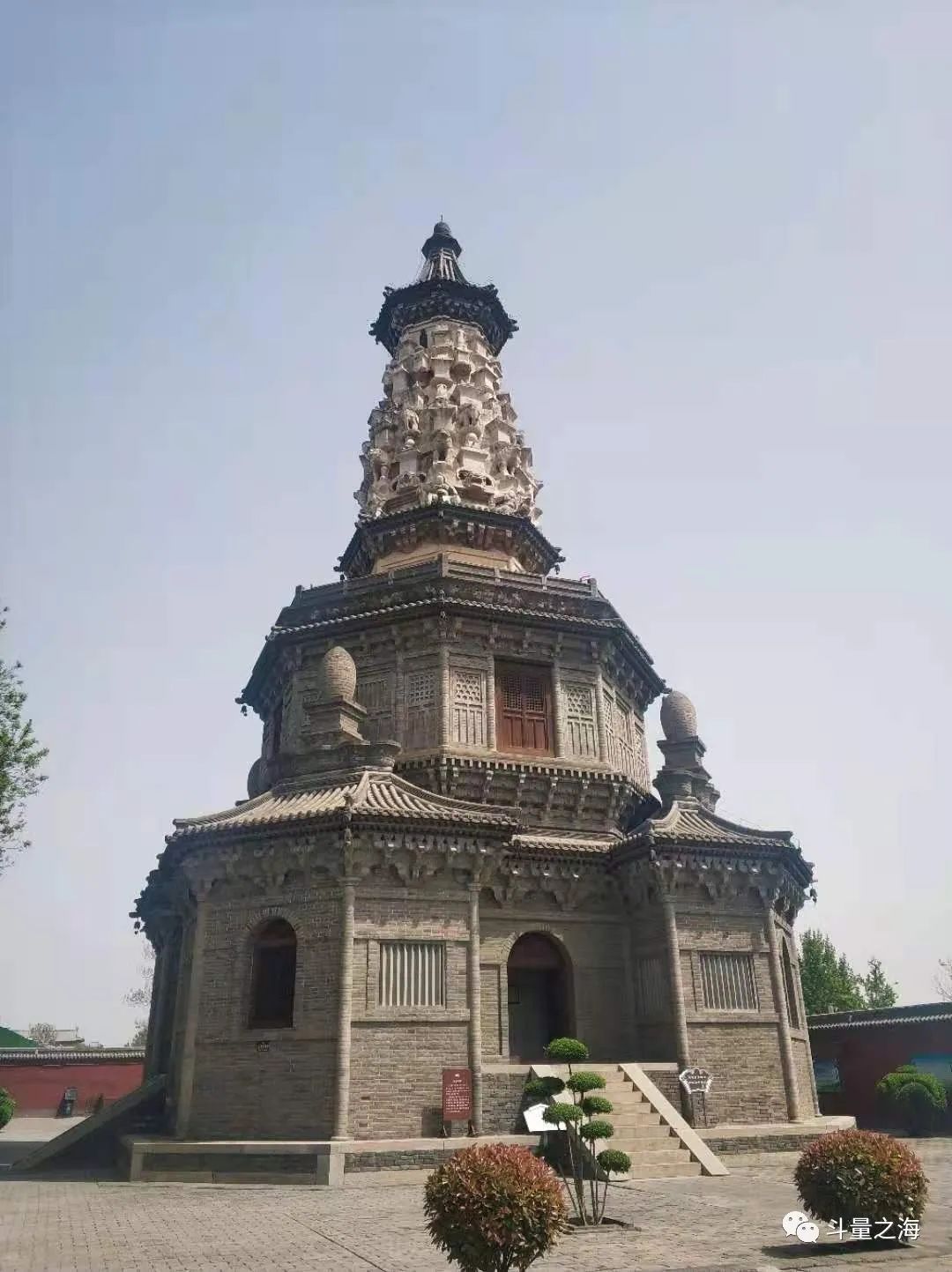
Even tourists who don't understand history and architecture will be shocked by the gorgeousness of this tower. In fact, this kind of tower is very rare. This kind of tower is called "Flower Tower", and the name can tell that the style is gorgeous like a bouquet. In the same way, this kind of pagoda was mainly seen in the Song, Liao and Jin dynasties, and almost disappeared after that. Now there are only a dozen in the whole country, and the Hua Pagoda of Guanghui Temple in Zhengding is the most beautiful and gorgeous among the dozen.
This Hua Pagoda was originally built in the Tang Dynasty, but we all know that the Tang Pagoda is relatively simple, so this pagoda was renovated and rebuilt in the Jin Dynasty. There are four small towers on the four sides of the main tower, which were basically destroyed during the Republic of China and were rebuilt in 1999.

The characteristics of imitation wood structure and splicing are the parts worth appreciating. Simply put, bucket arches, railings, and pillars are parts of wood structure buildings that seem to be normal. They are relatively easy to make with wood, but this brick imitation wood building is made of bricks The style of the wood structure is difficult to modify after the bricks are fired, so the entire production and splicing process is very delicate and complicated.
The ticket for the Hua Pagoda of Guanghui Temple is 15 yuan. It stands to reason that this tower should not charge the ticket. It is fine to look outside, but why is it charged? Because this is the only tower in Zhengding that can climb to the top of the tower. Considering that many pagodas in many places are not allowed to climb to the top, or even impossible to enter at all, the ticket for the Hua Pagoda of Guanghui Temple is very worthwhile.
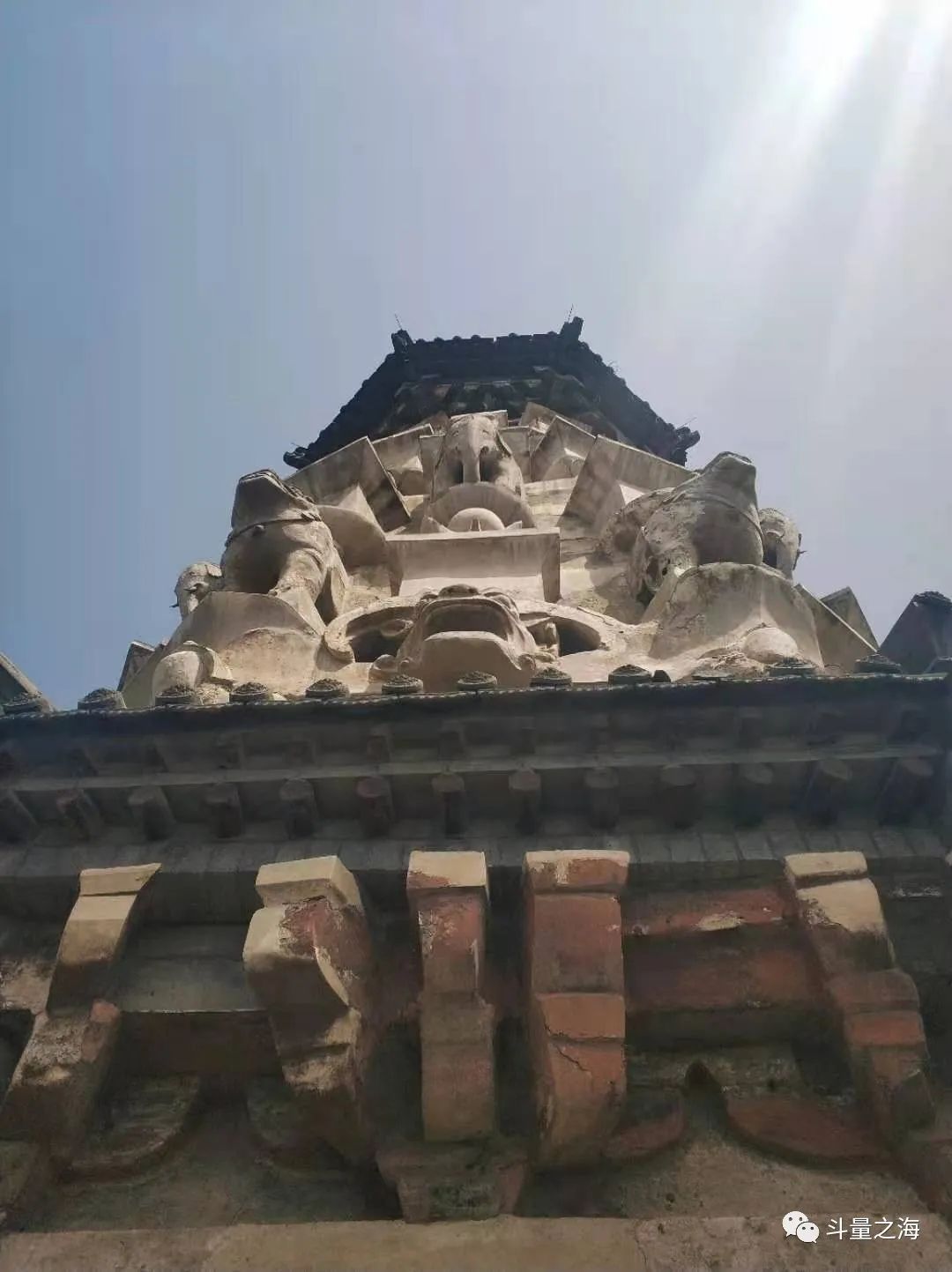
When climbing to the top, everyone should pay attention to safety, because there are stone stairs inside, which are relatively steep and a little slippery. During the process of climbing the tower, pay attention to the traces of the remaining murals. When you get to the top floor of the tower, you can walk to the flat seat outside the tower. You come here to appreciate the "flower top" part of the tower at a close distance, which are all stone carvings, lions, elephants, warriors, bodhisattvas and so on.
When you arrive at the flat seat outside the tower, you must be careful. The outer fence is relatively low and the wind is relatively strong above. Especially when standing on the side and looking up at the stone carvings on the top of the tower, you must keep your hands on the fence.
Linji Temple
(not open)
Linji Temple is being renovated and closed, but we can look at Chengling Pagoda in Linji Temple from the outside. In fact, if we appreciate the pagoda, if it is not to appreciate the detailed carvings, then the close-up view is not as good as the distant view, and the long-range view is the overall shape of the pagoda. Including placement with other buildings.
Because it is not open, we will briefly introduce it. Linji Temple is the ancestral court of Linji Sect. Linji Sect is a school of Zen Buddhism. It became the mainstream after the Song Dynasty. Stimulates people's epiphany, does not emphasize penance, but uses Zen wisdom to eliminate obsessions and troubles (of course, it is actually very complicated).
It is worth mentioning that the Rinzai sect has been carried forward in Japan. The famous Kinkaku-ji is the temple of the Linji sect of the Xiangguo Temple, and the builder of the Kyoto Xiangguo Temple is the famous general Ashikaga Yoshimitsu.
The founder of Linji Temple was named Yixuan. Yixuan passed away in Tang Yizong era. His relics were divided into two pagodas, one of which was gone. Linji Temple's Chengling pagoda was the remaining one, but the original pagoda Destroyed during the Song-Jin War, the current tower was rebuilt in the Jin Dynasty and has been rebuilt many times later.
Kaiyuan Temple
Tickets are 15 yuan
Kaiyuan Temple is a small climax of Zhengding Cultural Tourism, and there are many interesting places.
We have introduced a historical common sense in the previous trip to Dingzhou, that is, during the Xuanzong period of the Tang Dynasty, many Buddhist temples were renamed Kaiyuan Temple, so the history of the temples is often earlier than that of the Xuanzong period of the Tang Dynasty. This Zhengding Kaiyuan Temple is generally believed to have been built in the Eastern Wei Dynasty, but the main building was rebuilt in the Tang Dynasty.
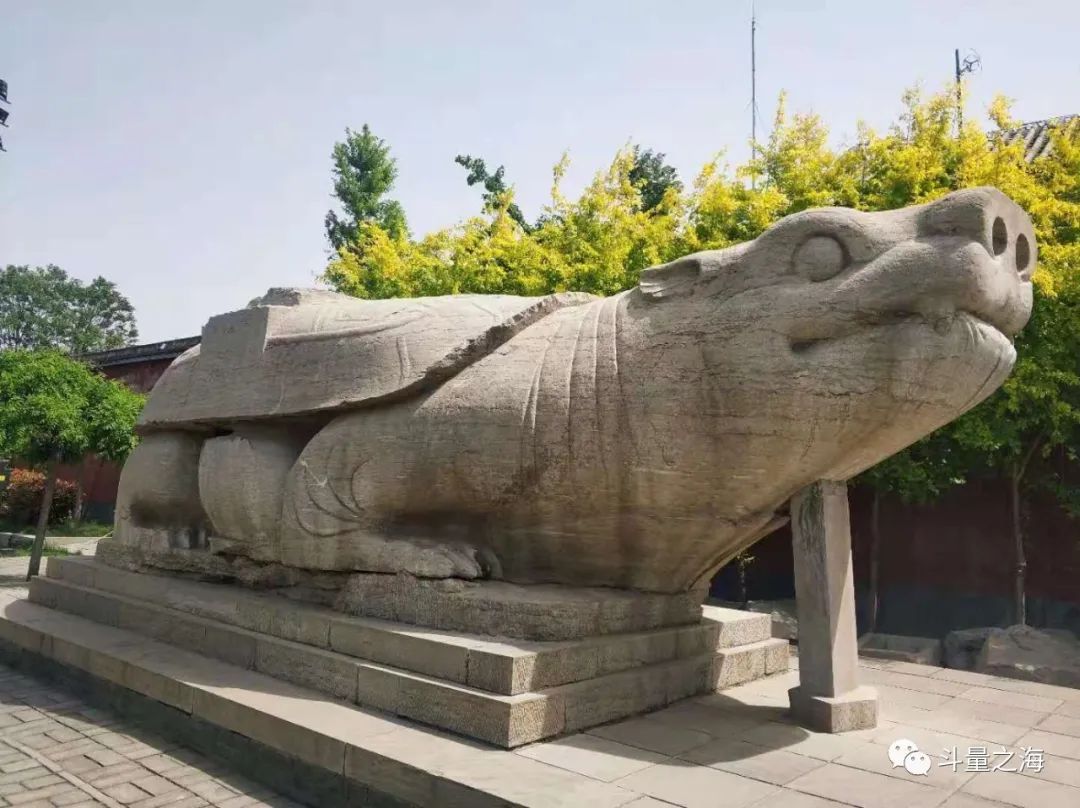
Entering Kaiyuan Temple, the first thing you can see is a huge scorpion . Its characteristic is that it is huge, especially huge, more than 100 tons. This is the largest scorpion in China at present. Because it is huge, it looks a little silly. Look at the nostrils from the front. Particularly proud. This huge bungalow was unearthed in Zhengding in 2000. At that time, the foundation of a residential building was dug, and it was dug out. There is a detailed description of the excavation process in the introduction next to it, but it took a lot of time.
Why is this shit so big? Why was it buried in the ground?
The stone stele on the back of this porch was also unearthed and placed next to it. This stele is the Ji Gong stele of An Chongrong, the military governor of Chengde during the Five Dynasties. It can be seen from various traces that such a large stele and the style of the dragon headed on the stele have the ambition to become an emperor, and being smashed and buried shows that the ambition has not succeeded.
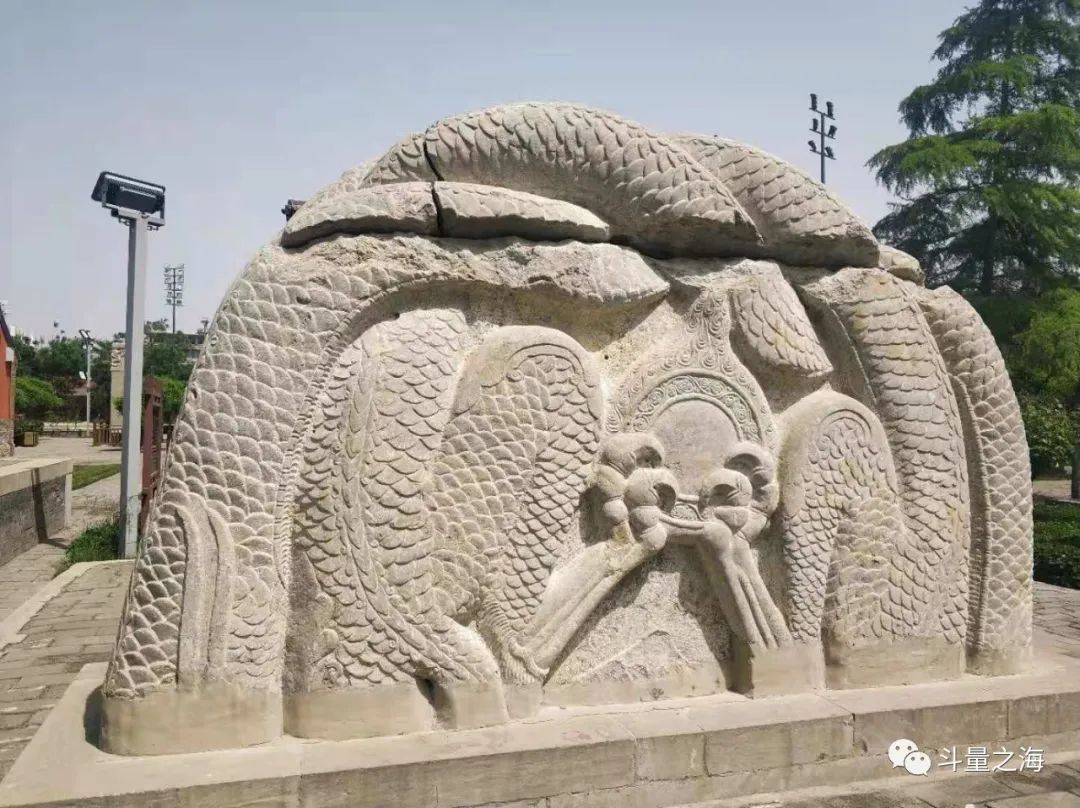
Who is Ahn Joong Young? Friends who know a little about the history of Song and Liao may be more familiar with a person - Shi Jingtang, he was the emperor of the Later Jin Dynasty during the Five Dynasties and Ten Kingdoms period. It started around this. An Chongrong was the Jiedu envoy of the Chengde army under Shi Jingtang. Because Shi Jingtang himself started from Jiedu envoy and became emperor, An Chongrong also had the ambition to become emperor. He later rebelled but was defeated, so this monument may be After his defeat, it was smashed.
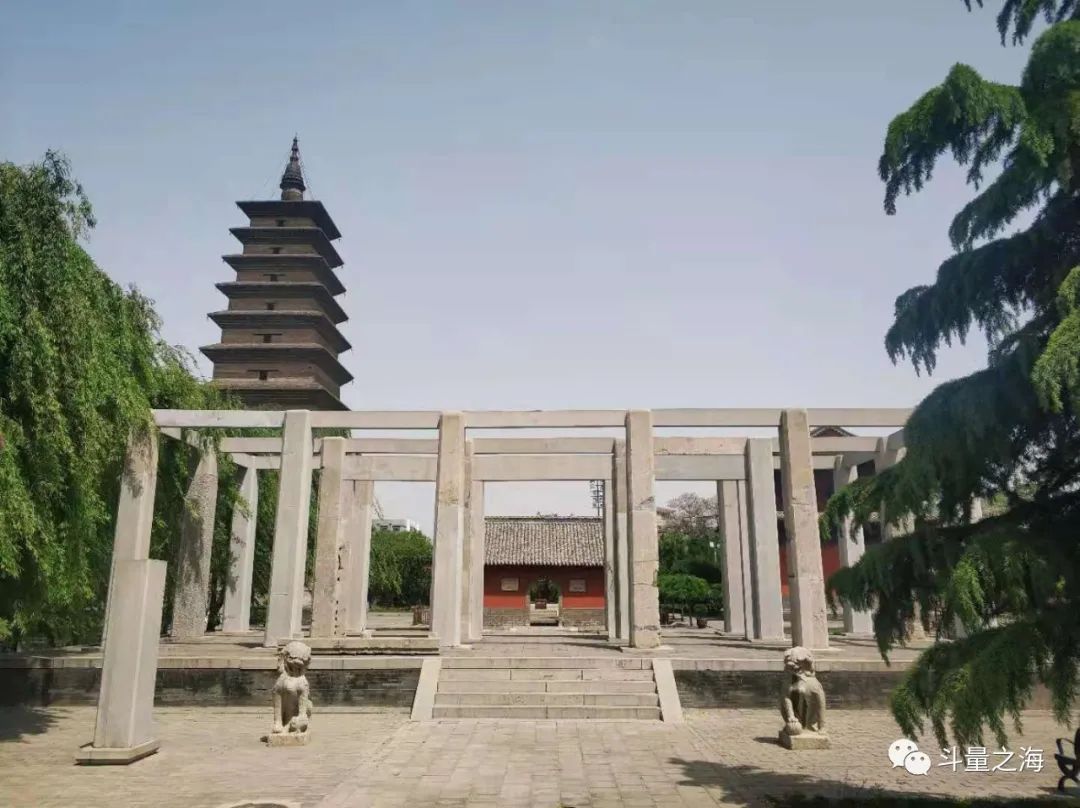
There is a pile of stone pillars on the opposite side of the temple. In fact, the door that tourists enter is the side door. The main entrance should face south. When we go to the southernmost side of the temple, we will find that the pile of stone pillars should be the first building facing the entire temple, called Sanmenlou. . But the building has been destroyed, and now only these stone pillars are left. If you look closely, you can see some patterns and lettering.
Looking back from the pile of stone pillars, there is the tower on the left, the bell tower on the right, and the Temple of Heavenly Kings in the middle. In fact, there was originally a main hall building in the innermost part, but it was destroyed. This is the structural layout of the entire temple. In the early days of Buddhist temples, the pagoda was the center, and then the temple was the center. It should have been a tower.
Let's go to the pagoda first. This pagoda is called Xumi Pagoda . It was originally built in the Tang Dynasty. The appearance is very simple and simple. It is the characteristic of the pagoda in the Tang Dynasty. There are some differences, it may be a copy of the Tang tower in the Qing Dynasty. Mr. Liang Sicheng believes that this is the oldest among the four towers in Zhengding, but it is actually the newest.
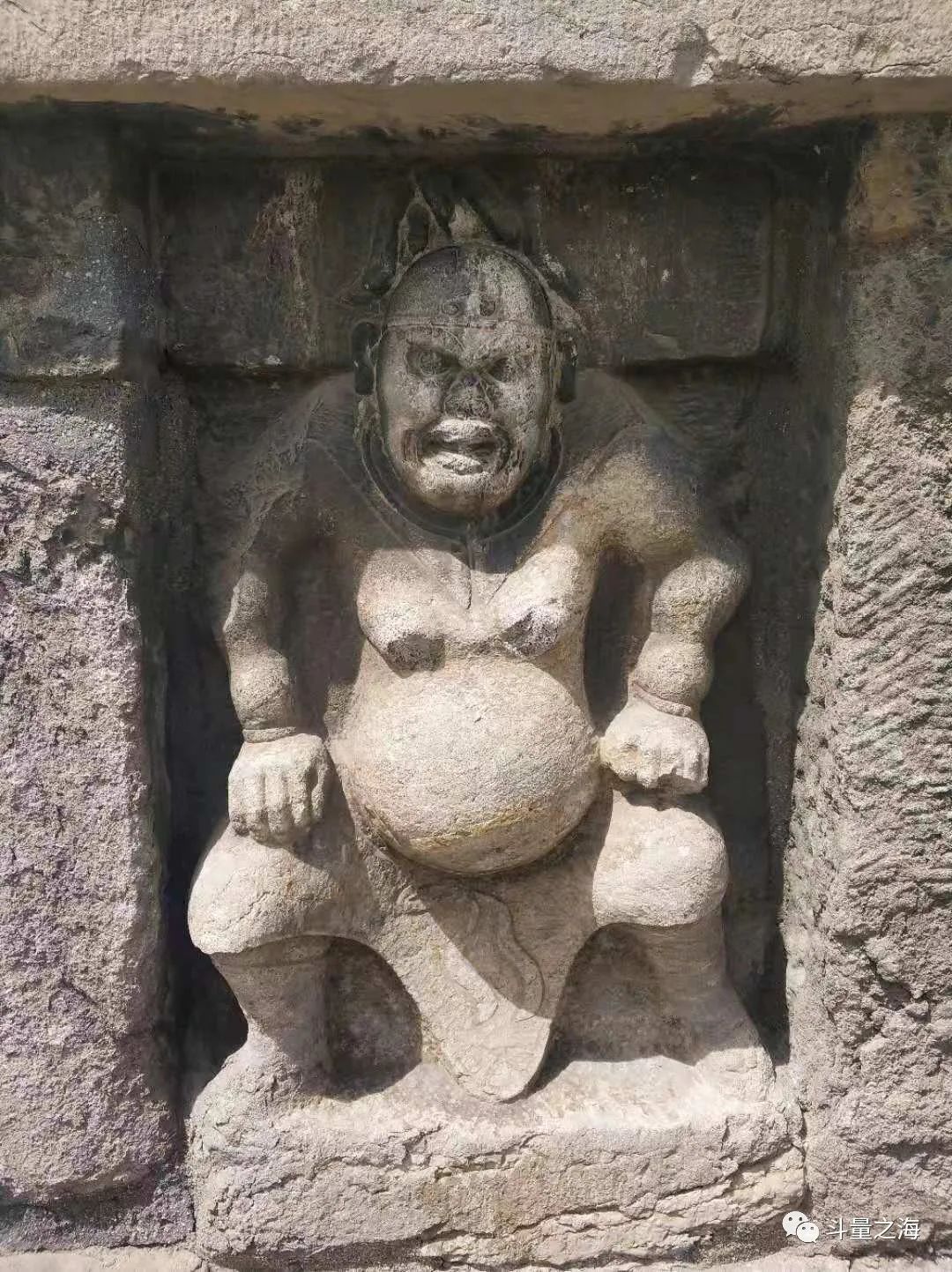
There is a stone forehead on the lintel of the main entrance of the pagoda, "Xumi stands tall". You can enjoy the carved patterns on the door frame. There are 8 relief sculptures of fighters in the four corners, as if they are holding the pagoda. Each expression is different, which is very interesting. .
Opposite the tower is the legendary only existing Tang Dynasty bell tower in China. It is also the first Tang Dynasty wooden building discovered by Mr. Liang Sicheng. In fact, only the lower half is from the Tang Dynasty, and the upper half was rebuilt in the Ming and Qing Dynasties. repaired. Entering the clock tower and looking up, we can see that the wooden structure is very simple and powerful, but because we are not allowed to go upstairs, we cannot see the clock.
There are also some cultural relic researchers who believe that in the photos left by Liang Sicheng, the upper part of the building also has some Tang Dynasty structures, but unfortunately it was demolished during the restoration.

County Confucian Temple · Fu Confucian Temple
Tickets 15+10
Let me put these two Confucian temples together to talk about why there are two Confucian temples. A simple understanding is the relationship between the municipal government and the provincial government in the provincial capital city.
To be honest, if you are not a fan of ancient architecture, these two Confucian temples are not very worth seeing, because each of the two Confucian temples has only one building of high value, but this value is the value of historical relics, which may require a certain depth of research. lovers can understand.
The entire county's Confucian Temple was built in the Ming Dynasty, but Mr. Liang Sicheng judged that the Dacheng Hall was a building in the Five Dynasties period, and he suspected that it was a remnant of a Buddhist temple.
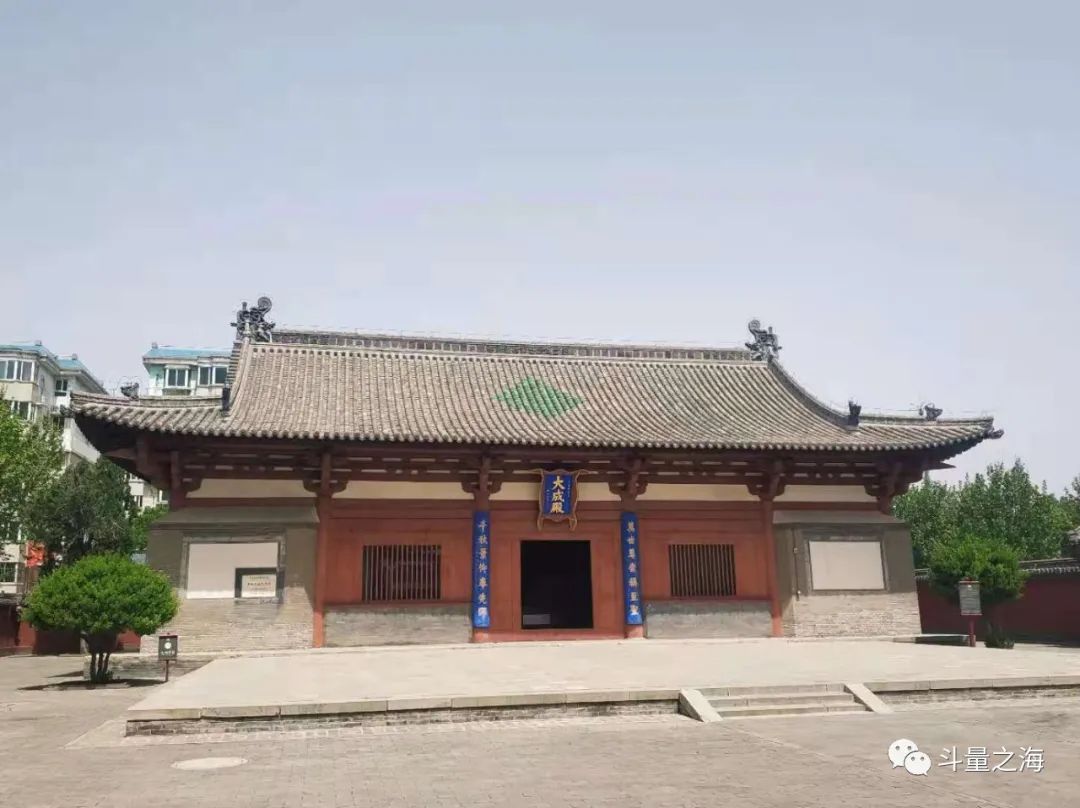
The Jimen in the Fu Confucian Temple is the architectural relic of the Yuan Dynasty, and it is also the only Yuan Dynasty building in Zhengding.
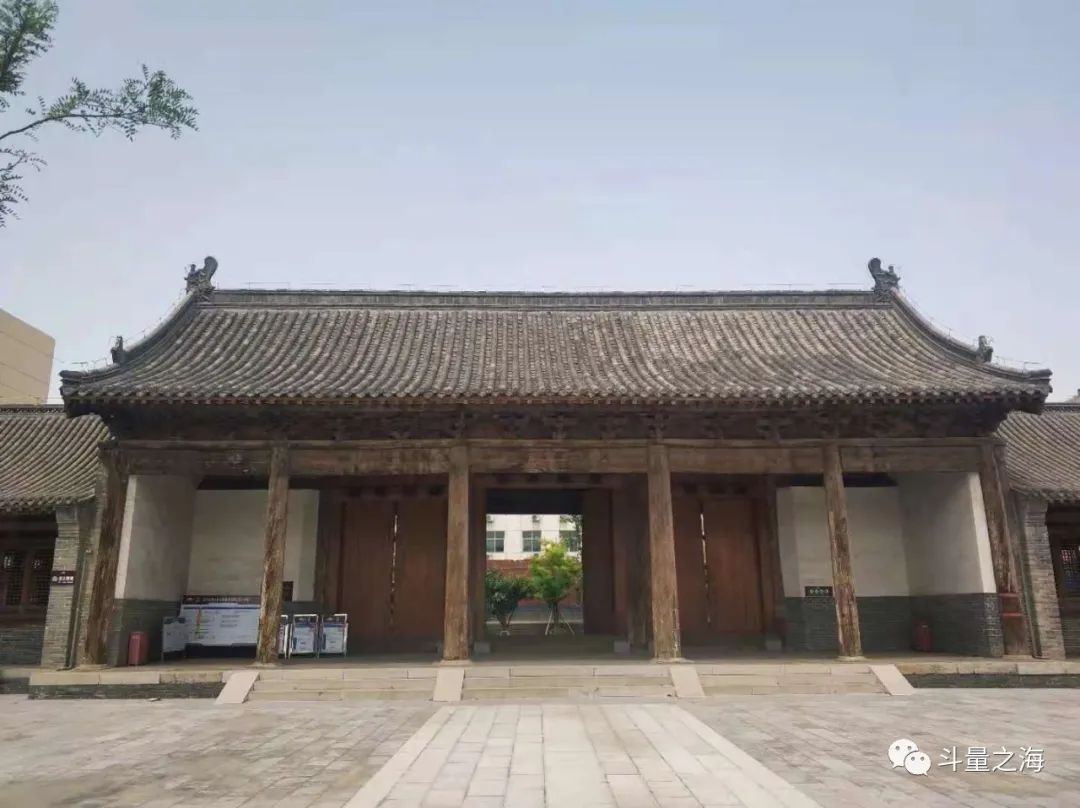
The details of these two buildings are so complicated that I can't understand them at all, so I just looked at them casually.
Tianning Temple·Lingxiao Pagoda
Ticket 15
Have you ever heard an idiom "stealing beams and changing columns", which is related to this Lingxiao Temple.
During the Northern Song Dynasty, there was a local monk named Huai Bing in Zhengding. At that time, the central column of the Lingxiao Pagoda was decayed and the tower was tilted. Monk Huai Bing asked someone to build a new central column and bring it into the pagoda, and then let everyone leave. After a long time, Huai Bing came out of the tower with the old central column, and the column had been replaced. Seriously, there is indeed a method of stealing beams and replacing columns in ancient Chinese architectural technology, which is actually to replace important parts without moving the main body of the building.
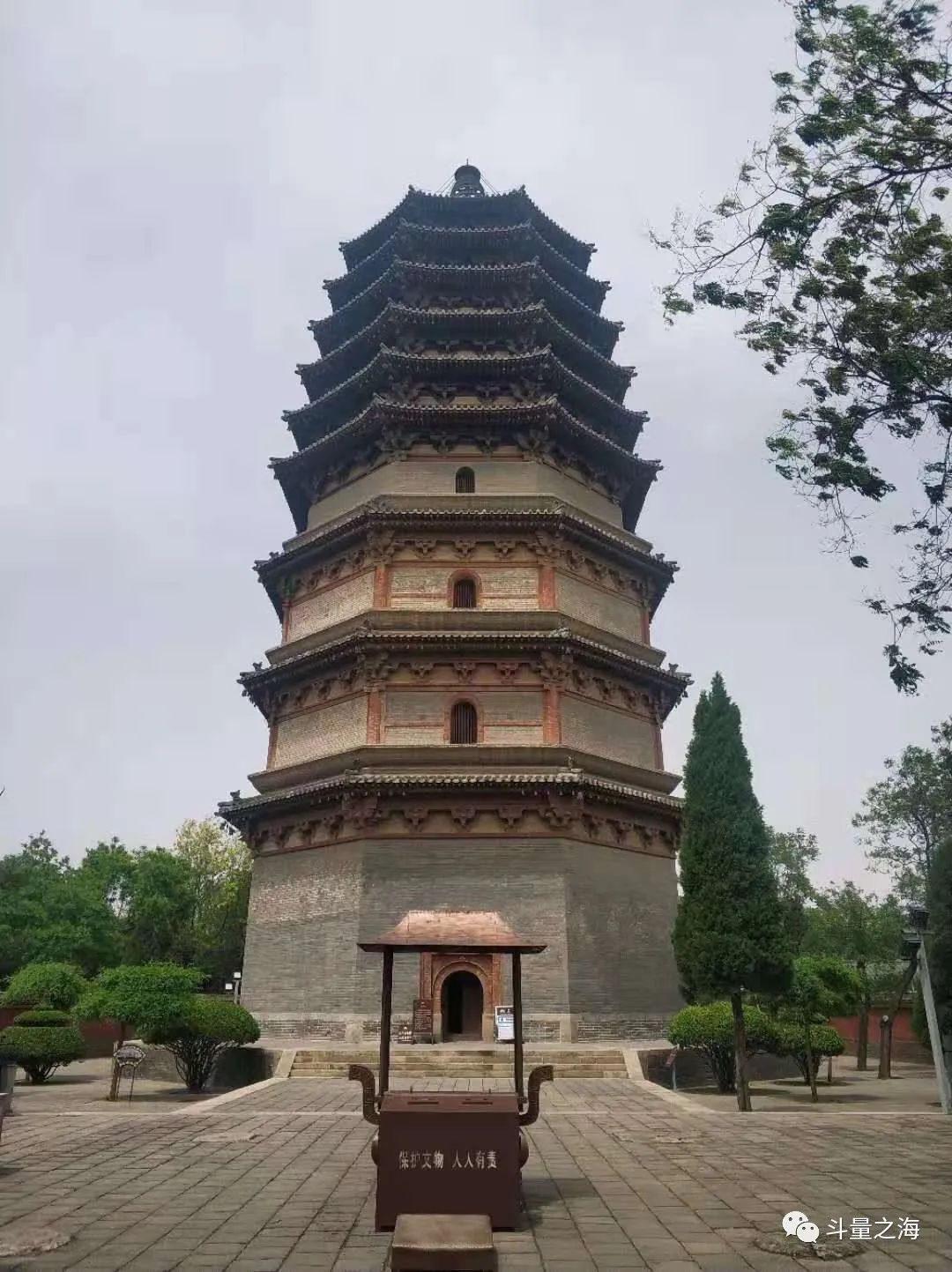
The design of the central column of the Lingxiao Tower is indeed very interesting. It does not start from the tower base to go up and down, but starts from the fourth floor, and then each floor is connected by beams to share the weight on the lower three floors. One of the reasons for this design is that huge woods are becoming scarcer, and the other is that craftsmen have found that they can bear the load of the tower without the need for up and down columns, and even have better wind resistance and shock absorption.
Tianning Temple was originally built in the Tang Dynasty and was rebuilt in the Song Dynasty. Now the temple no longer exists, and only this pagoda is left. This Lingxiao Pagoda is called "Wooden Tower". In fact, the lower layer is a brick structure, the middle layer is a mixture of brick and wood, and the upper layer is a wood structure. However, because each floor is relatively short and the wooden eaves are protruding and dense, it looks like a whole building from a distance. Same as wooden structure.
In addition to the Lingxiao Pagoda, you can see the stone lions at the entrance. This pair of lions with unique shapes is considered to be something from the Yuan Dynasty. It does look different from the norms of the Ming and Qing Dynasties. I feel that this lion is quite normal, because the real lion is not fat, but the later lions were carved as stocky as bears. I feel that it may be due to the close communication between the East and the West in the Yuan Dynasty, and people may have a real perception of lions. When it starts to close, people forget what a real lion looks like.
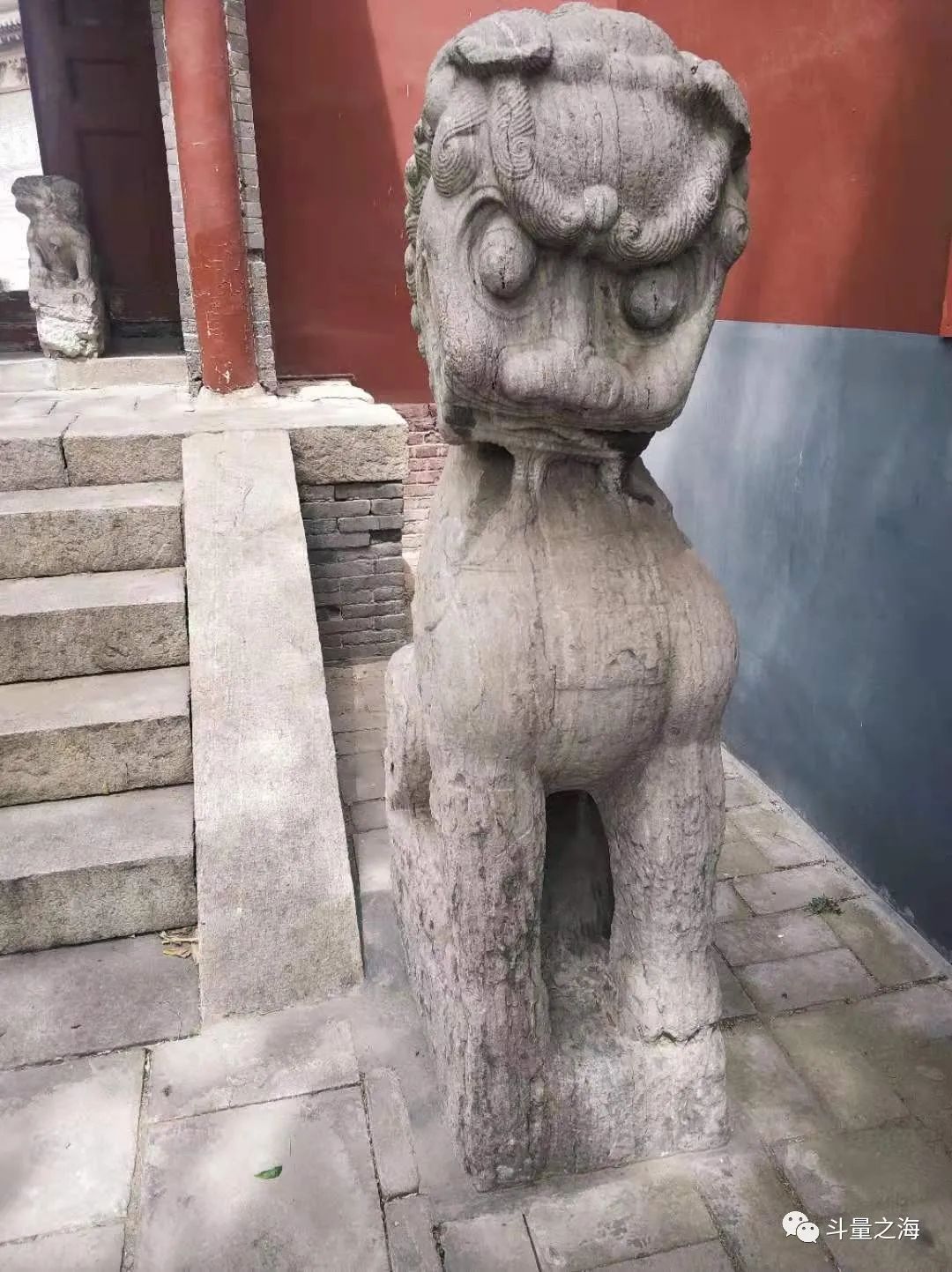
Longxing Temple
Ticket 50
Longxing Temple is the most anticipated hot spot for Zhengding trip, and it is also the most popular attraction in Zhengding Cultural Tourism Development. The interior space is large and there are many details to see. It is recommended to spend more time.
The earliest establishment of Longxing Temple was in the Sui Dynasty, and it was originally called Longzang Temple, so the famous Sui stele was called Longzang Temple Stele. Now this temple was built during the Northern Song Dynasty. There is a glazed dragon pattern on the shadow wall across the road. This is an imperial monastery.
From the outside, the first building should be the mountain gate, with the words "Edict Jian Longxing Temple" and the handwriting of Emperor Kangxi.
Walking into the monastery, you will face a ruin, originally called the Sixth Master Hall of Dajue , but now you can only see some pedestals. What does Dajue Sixth Master Hall mean? In some places, the Hall of Six Masters is also called the Hall of Seven Buddhas. There are Buddha Sakyamuni and six teachers. Sakyamuni is the Buddha closest to us. There are very few such halls in existence. The most famous one is Fengguo Temple in Yixian County. , Jiaocheng Xuanzhong Temple, Xuzhou Baolian Temple, etc., so it is a pity that only the ruins of the Sixth Master Hall of Dajue remain.
The most interesting thing is that there is a long row of Buddha and Bodhisattva statues on it. I guess the tourists brought offerings.
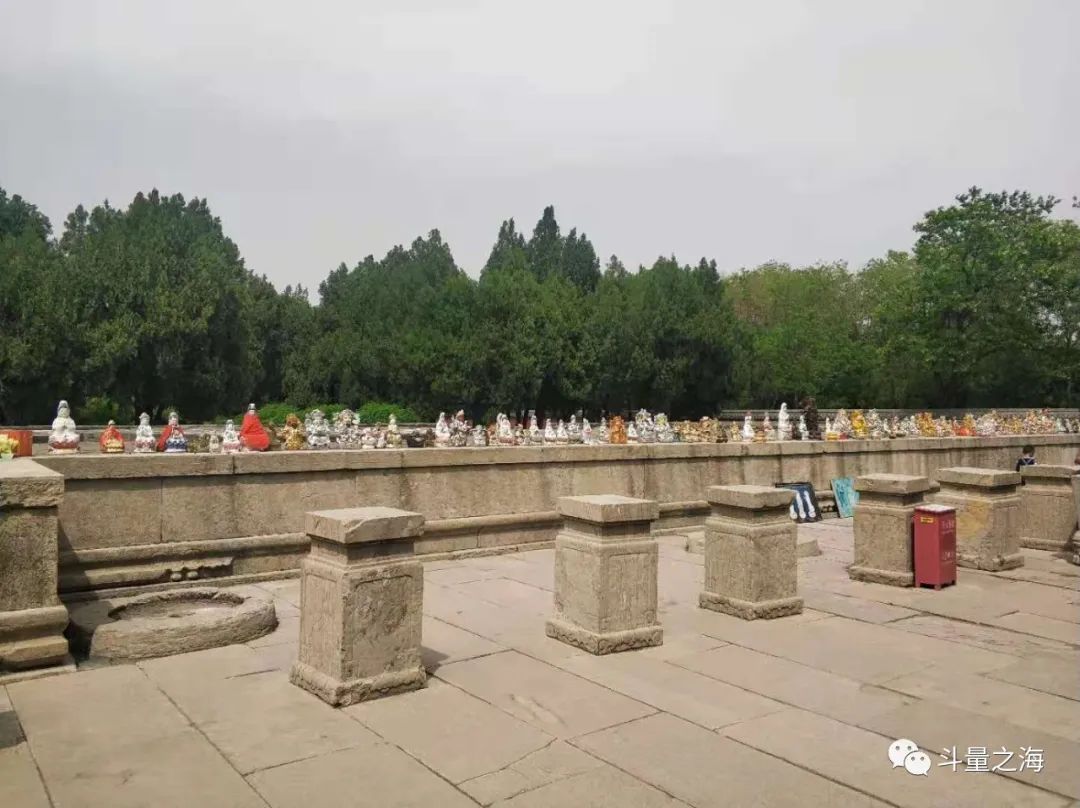
Walking in from this site is one of the treasures of Longxing Temple: Mani Hall .
This building is really beautiful. The plane is a cross square, and on each side there is a Xieshan-style hugging summer with a mountain flower protruding forward. This kind of building is the only existing one. Before we enter the hall, there is a stone incense burner at the entrance, which is a relic of the Song Dynasty.
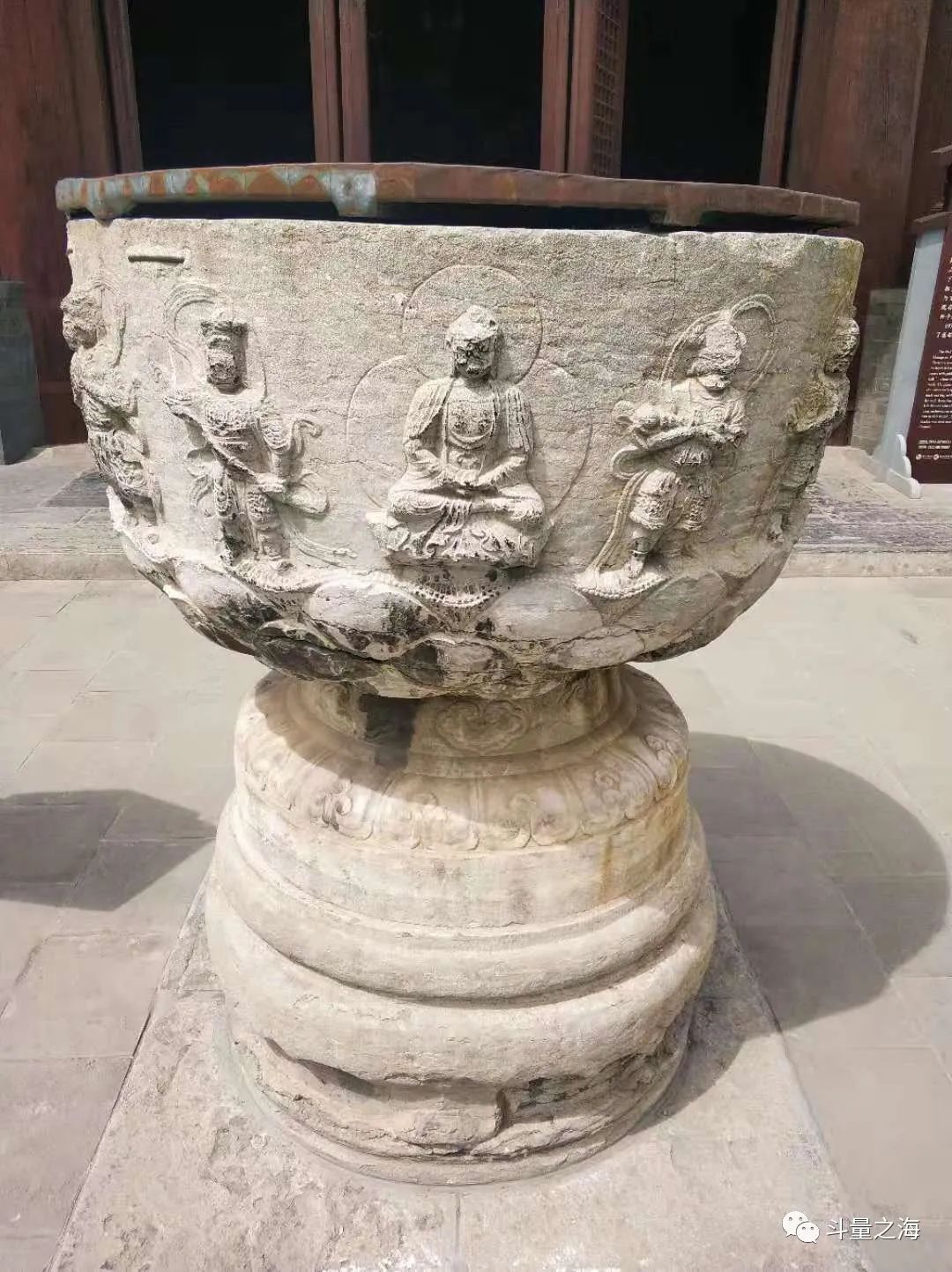
The main thing to admire in the Mani Temple is the surrounding frescoes , but the light in this room is too dark, it should be to protect the frescoes. What you can see clearly are the frescoes on the left and right sides of the fan-faced walls, one is the eastern jingliu world, and the other is the western paradise, pay attention to the pair of mother and child painted in the middle of the south wall on the east, this is the devil child mother, who used to be the evil god who eats children. , Buddha hid one of her children, and she was so anxious that she was transformed and became the protector of children.

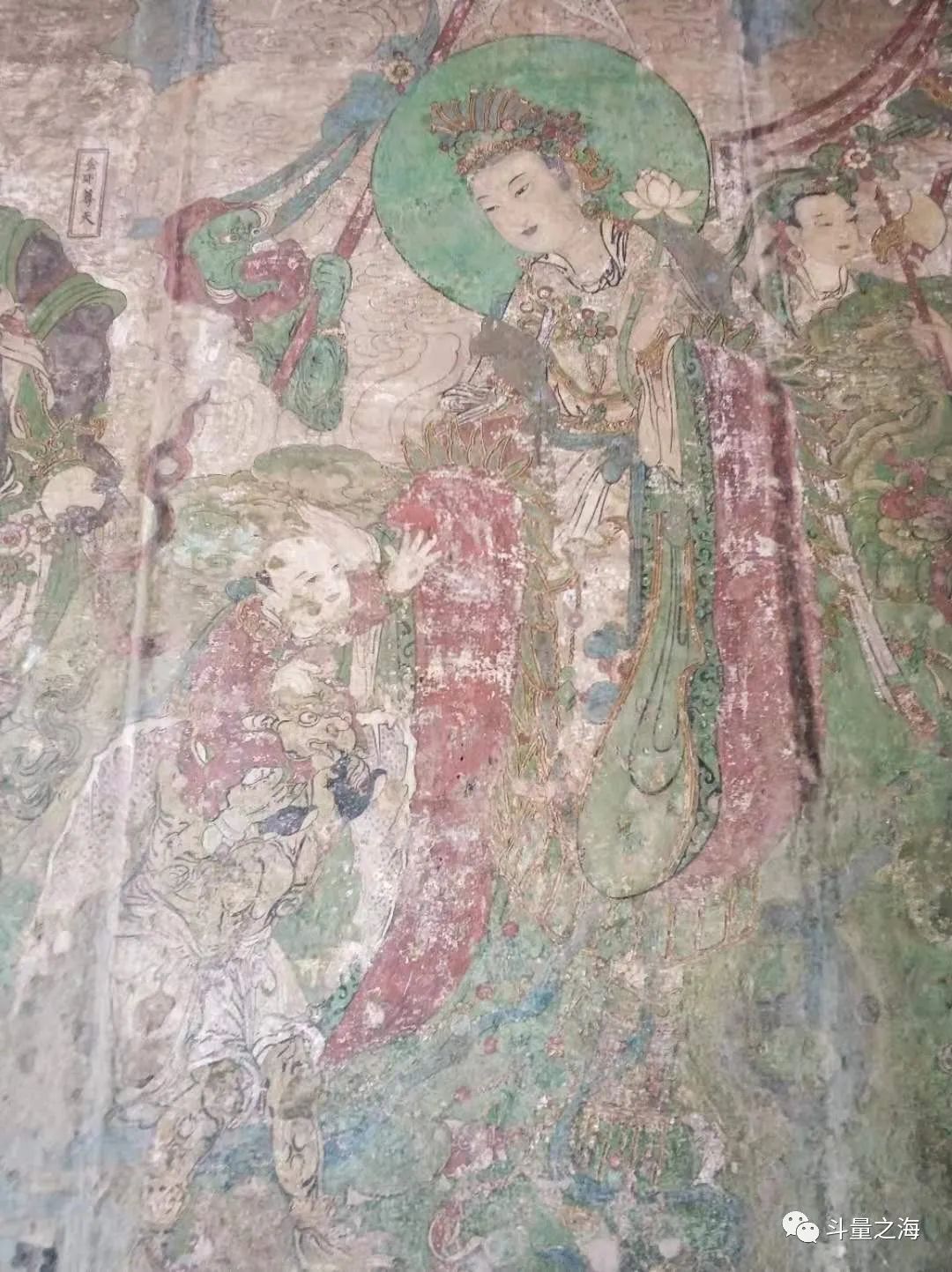
Going around to the back of the temple, it is the most beautiful existence in this temple: Guanyin sitting upside down on the multi-colored hanging mountain , known by Lu Xun as the god of Oriental beauty, but Lu Xun did not see the real thing, but bought a photo of this Guanyin, "Downside. Sit.” We also mentioned in the article we posted earlier, not sitting upside down, but sitting on the back wall of the main hall.

This scene is the Putuoluga Mountain Dojo according to Guanyin. The hanging mountain is a combination of sculpture and painting. Although later generations have continued to modify and paint, the original expression is still clear. And because the main hall is very dark, it will light up when you walk to the back of the hall. The light just shines on Guanyin, bowing his head and eyebrows, surrounded by colorful hanging sculptures, immortals, Arhats, birds and beasts. If you look closely, you will find that this Guanyin is not dignified and graceful enough. This is the secular beauty of Guanyin in the Song Dynasty, and you can say that this Guanyin looks like a beautiful man, because Guanyin was originally a male appearance.
When I walked out of the Mani Hall and looked back, I found that the building was in the shape of a cross. The front and the back were the same. I didn't know whether to enter or exit.
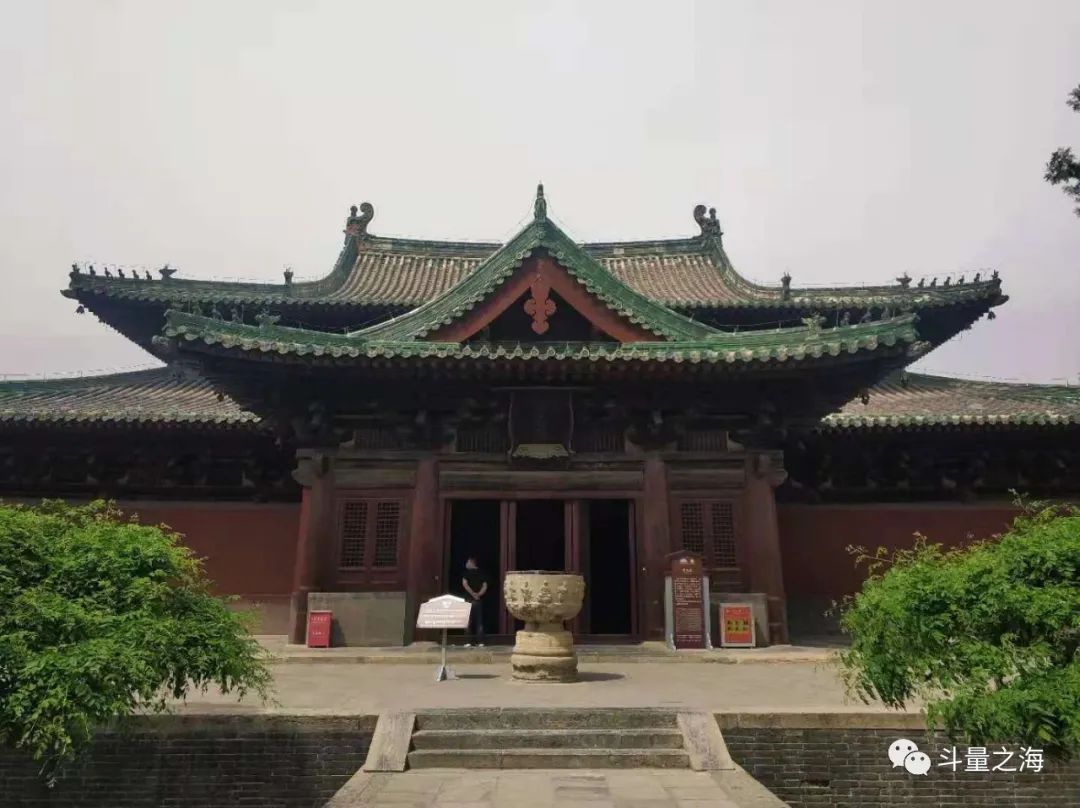
There is an archway behind the Mani Hall. It was rebuilt in 1986. It reads Miao Zhuangyan Domain and the back reads Tongjin Treasure Raft. Climb to the other shore", escape from the bitter sea to reach the other shore, and combine them with artistic conception.
Passing through the archway is the ordination altar . Inside the ring altar is a bronze-cast double-sided Buddha of the Ming Dynasty. Facing the south, that is, the front is Amitabha Buddha, and the back is the Medicine Buddha. This form is rare. Helping sentient beings should mean this.
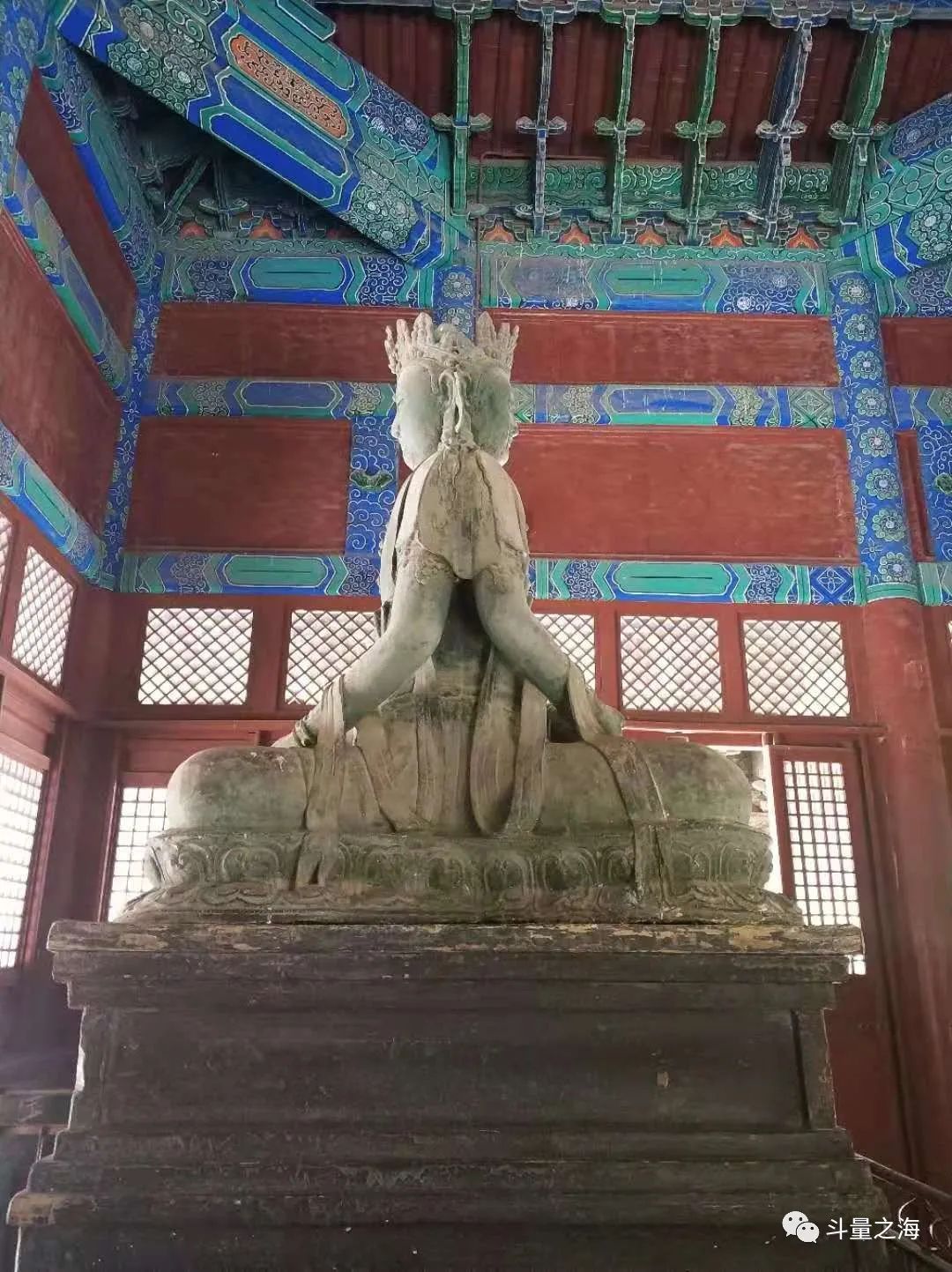
What is an altar? It is the place where Buddhist disciples are ordained. After they are ordained, they can become official monks and nuns. Only relatively large monasteries have ordained altars. There is a Jietai Temple in Mentougou, Beijing. The location of this ring altar was originally a stupa. Later, the tower collapsed at the end of the Yuan Dynasty, and the ring altar was built in the Ming Dynasty.
There is a plaque on the altar of "Jin Sheng Jue Road", and Li Bai has a poem "The golden rope opens the road to awakening, the treasure raft saves the lost river", does it correspond to the "Tongjin Bao raft" on the front archway.
There should be a Weituo Hall behind the altar of precepts, but there is no more. You can see a foundation site. The Dabei Pavilion is directly opposite to the back, the Zhuanzang Pavilion on the left, and the Ci's Pavilion on the right. Let's go to both sides first. .
Don't confuse the Wheel-Turn Tibetan with the Prayer-Turn, the latter is from Tibetan Buddhism. The Rotary Collection is simply a revolving bookshelf, which is a relic of the Song Dynasty, and there are very few left. This bookshelf is octagonal, with a shaft in the center, it can be rotated, it is 7 meters in diameter and more than 10 meters high, it is very huge. This symbolizes that the Dharma is like a wheel, and the concept is similar to that of a prayer wheel. Where is the mystery? Such a huge object weighs all on the base and weighs several tons when filled with books. It is still made of wood, but it can be rotated.

The Ci's Pavilion is dedicated to Maitreya Bodhisattva standing and preaching. It was originally carved in the Northern Song Dynasty. It is said that it was carved from a single wood, but the current one was recolored and restored in the 1990s. We usually see Maitreya with a big belly as Maitreya Buddha, a common image after the Ming and Qing dynasties, and this Maitreya is Maitreya Bodhisattva, that is, Maitreya before he became a Buddha, because Maitreya is a future Buddha, and he has not yet become a Buddha.

In the middle of the two side halls is the Dabei Pavilion , which is also the main building of the Longxing Temple. It was originally a building in the Song Dynasty and was rebuilt in the late 1990s. On both sides of the Dabei Pavilion are the Yushu Building and the Jiqing Pavilion, which are connected by small bridges, but unfortunately they are not allowed to go upstairs.
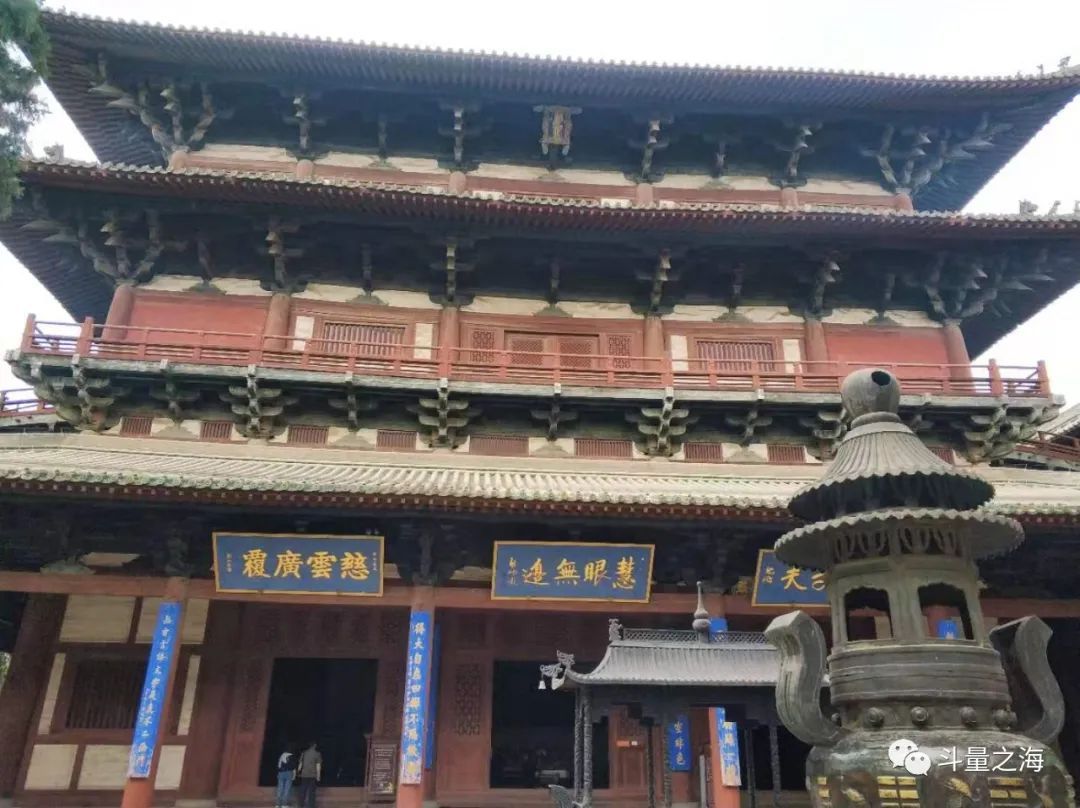
The focus is on the 42-arm bronze-cast Guanyin inside. The works of the Song Dynasty are also the largest bronze-cast Guanyin statues in existence. However, this Guanyin only has two hands together that are real copper castings. Others have long been destroyed and later restored. Wooden arm.
Standing under the Guanyin and looking up, I suddenly felt that it was right not to go upstairs. The perception of this volume is to look up.
There is a story about the casting of this Bodhisattva statue. In the Tang Dynasty, there was a bronze cast Bodhisattva statue in this monastery, but half of it was destroyed in the war. In the Five Dynasties, it was half copper and half clay. Later Zhou Shizong Chai Rong The emperor destroyed the Buddha and came here in person to smash the clay sculptures and take the bronze statues to melt and cast copper coins. During the Song Taizu period, he came to this monastery by chance, and the monks told him this story. Song Taizu decided to re-cast a larger bronze Bodhisattva statue, which is what it is now.
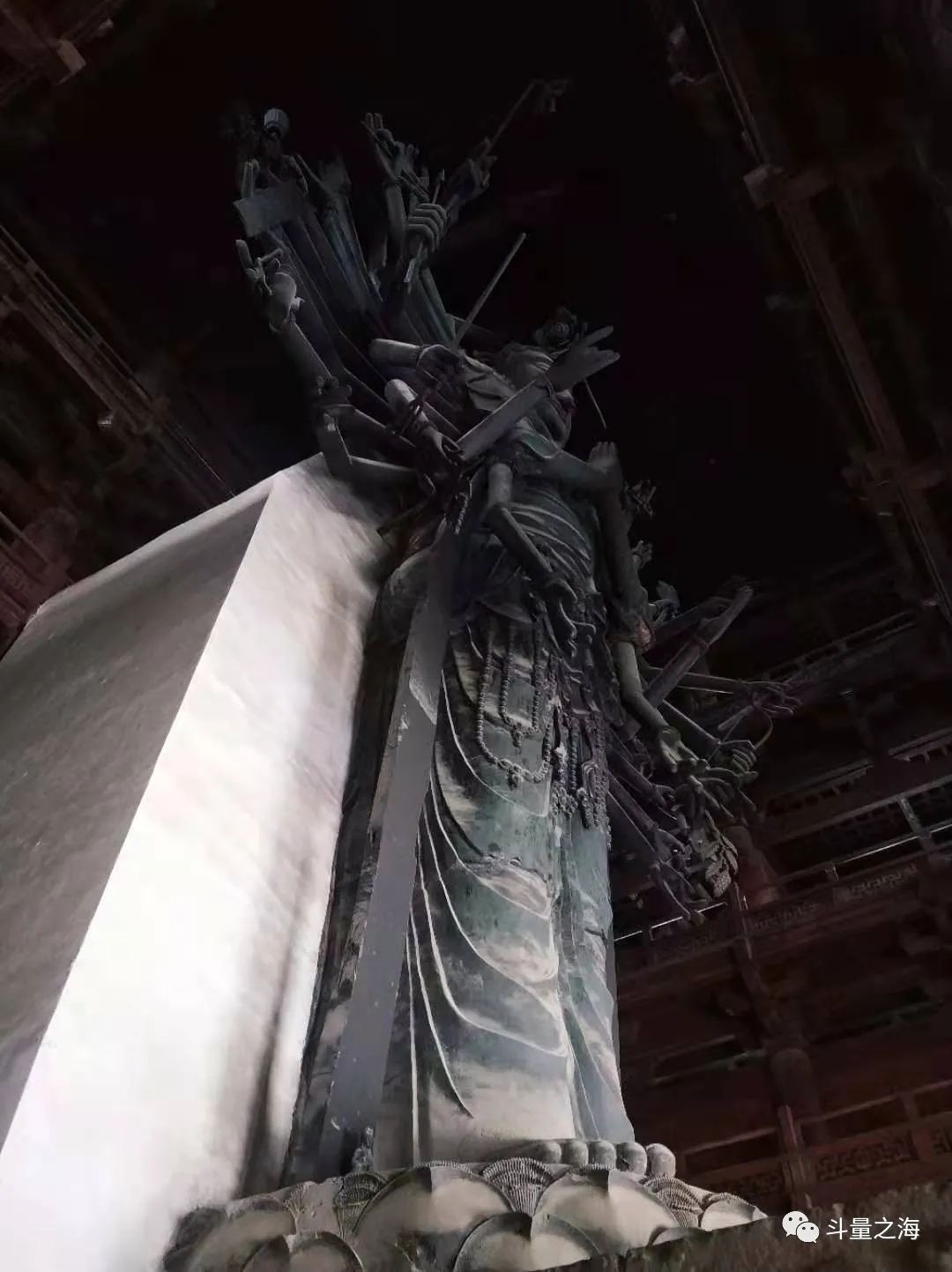
The Xumizuo below the Guanyin is also a legacy of the Northern Song Dynasty. It's just a pity that there were originally a large number of mural sculptures in this temple, which were destroyed during the restoration in the Republic of China.
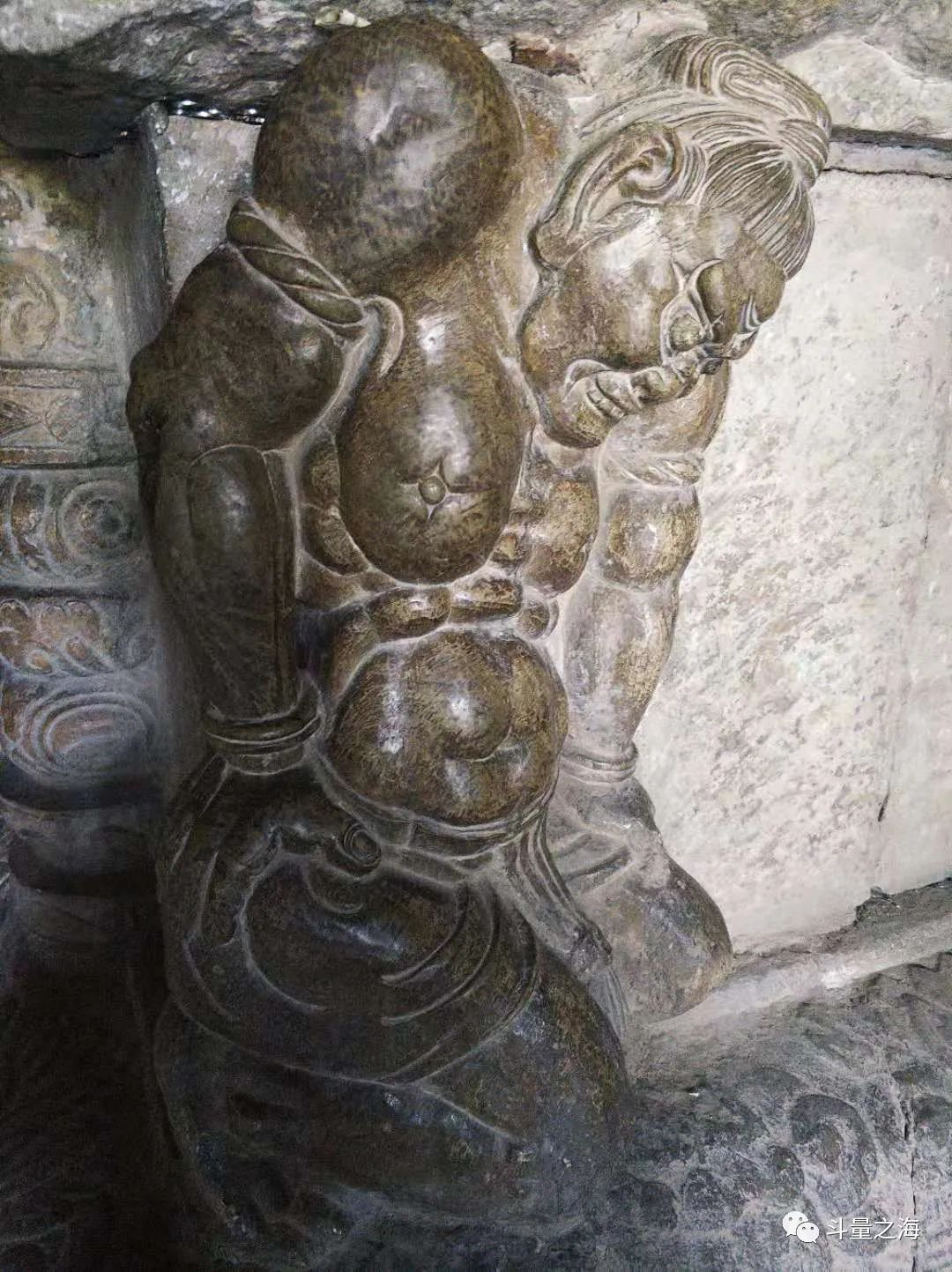
From the Dabei Pavilion to the back is the Amitabha Hall, which was built by private fundraising, and the next one is interesting, the Pilu Hall . This building was not originally here, but the main hall of Chongyin Temple, another temple in Zhengding. It was relocated in 1959. There is a four-sided Pilu Buddha in it, which is a bronze Buddha statue cast by Emperor Wanli of the Ming Dynasty for his mother. . Vairocana's full name is Vairocana Buddha, which is the Great Sun Tathagata Buddha in Tantra.

Many people will ignore the backyard of Longxing Temple, but you must go shopping. Some cultural relics that do not belong to Longxing Temple are also placed here. Many stone tablets are in the promenade on the side, and there are also unearthed locally in Zhengding. The statue of Buddha, as well as the stupa of Master Guanghui of the Jin Dynasty.
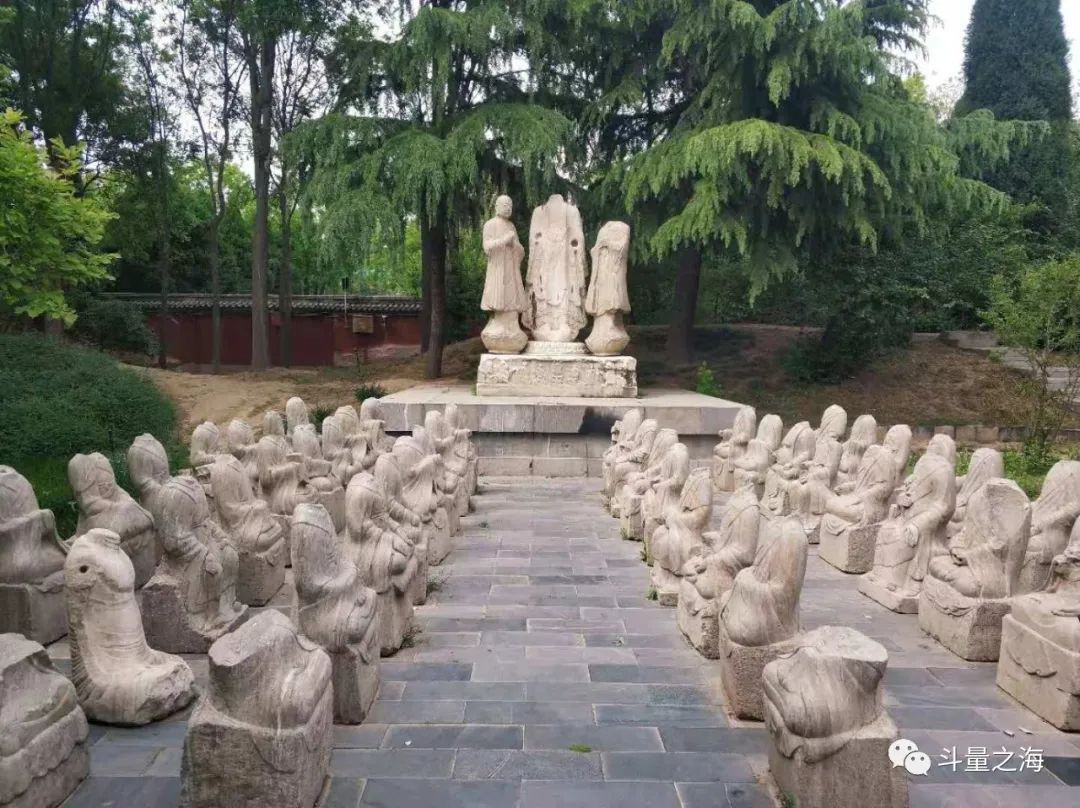

South Gate
After this trip, we finally went to the Nancheng Gate, because the parking lot and bus stops are here, and the Nancheng Gate is a key restoration project of Zhengding ancient buildings. You can climb it for a walk and overlook the entire county.
The repair of the South City Gate is relatively complete. You can see the structure of the ancient city's fortifications. There are three layers. The innermost city is the inner city, the outer city is the Weng City, and the outside is the Moon City. The gates of the Moon City and the Weng City are not in the same direction. This design is to force the siege party to move to expose the side, and cannot directly break through the city gate and drive straight in.

In many ancient TV dramas, you can rush into the city by directly breaking a city gate. In reality, it is relatively rare. Generally, the city gates of large cities have iron-cast gates. , and the design of the city gates is layer by layer, and there will be no situation where one city gate will break the city. Even if the attacking side has the upper hand, sieging a city is very difficult. Generally, it is a siege without attacking, waiting for the food in the city to be exhausted and being isolated and helpless, and finally unable to defend, or surrounded on all sides and feigned to disperse the defending troops, and then attacked at a city wall. enter.
Therefore, Sun Tzu's art of war said that the upper armies are attacked, the second is the Jiaojiao, the second is the army, and the lower is to attack the city, and directly attack the defended city is the most unavoidable choice.

Finally, let’s talk about a few scenic spots. You can think about it yourself. Rongguo Mansion, Zhao Yun Temple, and Chenghuang Temple are all modern antique buildings. I don’t think there is much to see, and I haven’t read A Dream of Red Mansions. If you are interested, you can look at other online Travel notes first to understand what is there; Zhengding Museum is next to Longxing Temple, and there are not many collections. The main exhibits are porcelain, Buddha statues and Zhengding city paintings. You can also stroll by the way; Yanghe Building was originally a very good building, but now This is a reconstruction, and you can see a stage in front of it. It used to be the Guandi Temple.
The monument "Ode to King Jigong of Qinghe County in the Tang Dynasty" is a good thing. You can take a look at it between several scenic spots. However, this monument is wrapped in a building built in 1953 and cannot be seen inside, so it doesn't make much sense. . This monument is also called Wind-moving Monument, because it is said that it will shake when there is wind. I suspect that the one-story building outside is afraid of the wind blowing to it.
This stele records Li Baochen, the military governor of the Chengde army in the Tang Dynasty. He was the adopted son of An Lushan. His original name was Zhang Zhongzhi. Shi Siming, after Shi Siming's death, he surrendered to the Tang army again. After the An-Shi Rebellion subsided, he let go of the past and gave him the surname of Li, changed his name to Li Baochen, and made him the Jiedushi of Chengde.
Speaking of the military governor of Chengde, we mentioned earlier that a certain person also held this position, that is, An Chongrong, the owner of the huge bunker in Kaiyuan Temple.
Back to Beijing
Zhengding is a county town with well-developed cultural tourism, so there are many restaurants and shops, so there is no need to introduce it. If it is special, there is a Wangjia Shaomai that is not bad. Mai, this kind of simmered wheat is relatively rare, you can try it, the taste is justified anyway.
As for the consumption of cultural tourism, one of the problems with Zhengding is that it is a bit too large. There are only a few small pedestrian streets in the three ancient commercial districts in the previous cities. In Zhengding, almost half of the city is built as an antique commercial district. It also covers the main road of the city, which requires a lot of passenger flow. If there are not enough tourists, it will present the most embarrassing aspect of the cultural tourism business in the ancient Chinese city: deserted.
The so-called ancient city cultural tourism, the most important thing is the lively atmosphere. Only with atmosphere can tourists immerse in it, get rid of the daily bad life, and enjoy the fun for a few hours here. Simply put, it needs to be compact enough not to let visitors sit idle. However, if the volume is too large, the connection between the scenic spots and the commercial street is relatively empty, or because there are few people, you can only earn a few fixed time during the holidays, it will be a bit embarrassing.
Zhengding itself is very rich in resources, which is very good for ancient architecture lovers who like few people, and to be fair, the construction effect has exceeded the level of cultural tourism development in most places in China, not to mention I still go during the daytime on weekdays, maybe Holidays will be more lively.
On the way back from Zhengding to Shijiazhuang Railway Station, the sand and dust were still scraping, and the yellowish sky cast an old filter on the city.
Like my work?
Don't forget to support or like, so I know you are with me..

铁锈与孤岛

多数人愿意跟随时代,甚至期待自己能引领时代,但总要有人负责落后于时代,成为人群中最无趣的那个人,郁郁寡欢地跟在时代后面捡拾被碾过的碎片。有的人就是永远都高兴不起来,总会在狂欢中嗅出苦难的味道,在歌舞升平里挖掘那些希望被永远遗忘的过往,那些令一小部分人感觉尴尬,同时令大部分人感觉扫兴的记忆。
Comment…